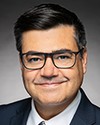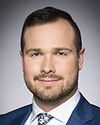It absolutely goes on, easily and naturally, to some degree. In a per-square kilometre basis, there are perhaps not as many soil scientists as there could or should be in the Prairies.
Some of my own collaborations, certainly earlier in my career, were very close collaborations with Agriculture and Agri-Food Canada scientists. We're co-located; up until fairly recently, we had a number of the scientists co-located right in our building. The Ag Canada building was right next door, but we had some of those scientists sitting right in our building, sharing facilities and lab space here. It was only as our college continued to grow and some of those scientists retired that, eventually, the remaining few moved back next door.
Across all disciplines that are represented here, we see really strong collaborations with the centre right here in Saskatoon, Swift Current and the other centres across the Prairies. Part of that has to do with the complementarity of our expertise. It's something that we always work toward.
We can continue to work on making that simpler. As I alluded to, there is the potential for sharing infrastructure and trying to make it a bit smoother to be able to share some of those resources. We've worked through it and we have the systems in place now, but anything we can do to continue to expedite and simplify those types of processes would go a long way toward facilitating and strengthening those collaborations.
I would be absolutely remiss if I didn't indicate that—as I said earlier—much of the success comes from those close collaborations throughout. The original soil survey units were co-located right here in the building. We do much of our plant breeder work really closely with the breeders who are located next door. That is absolutely something that we need to continue to work on.




